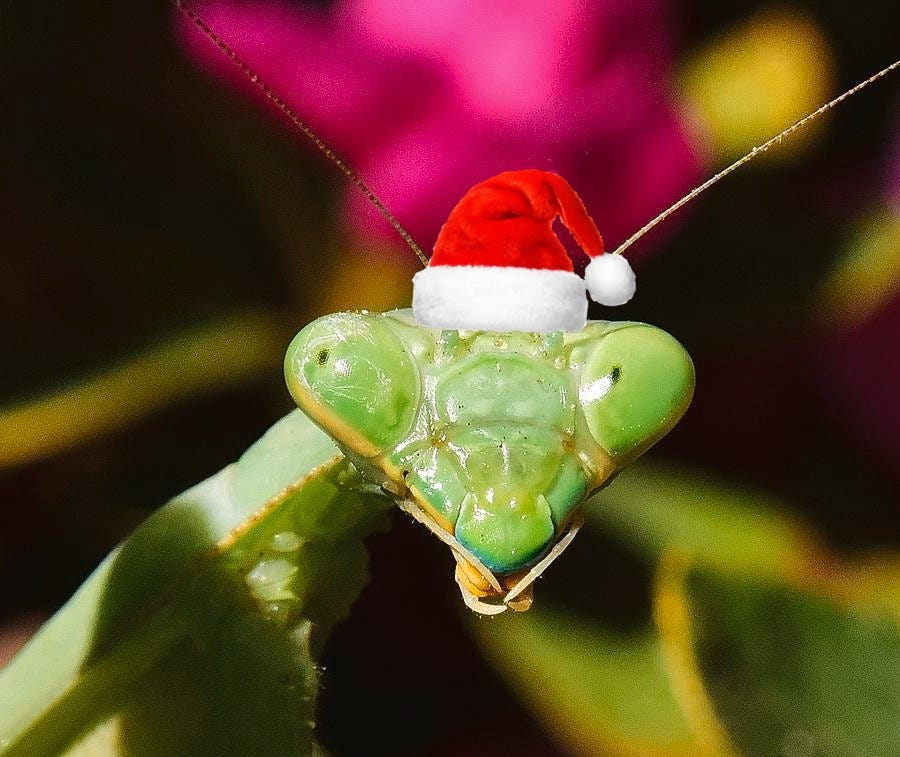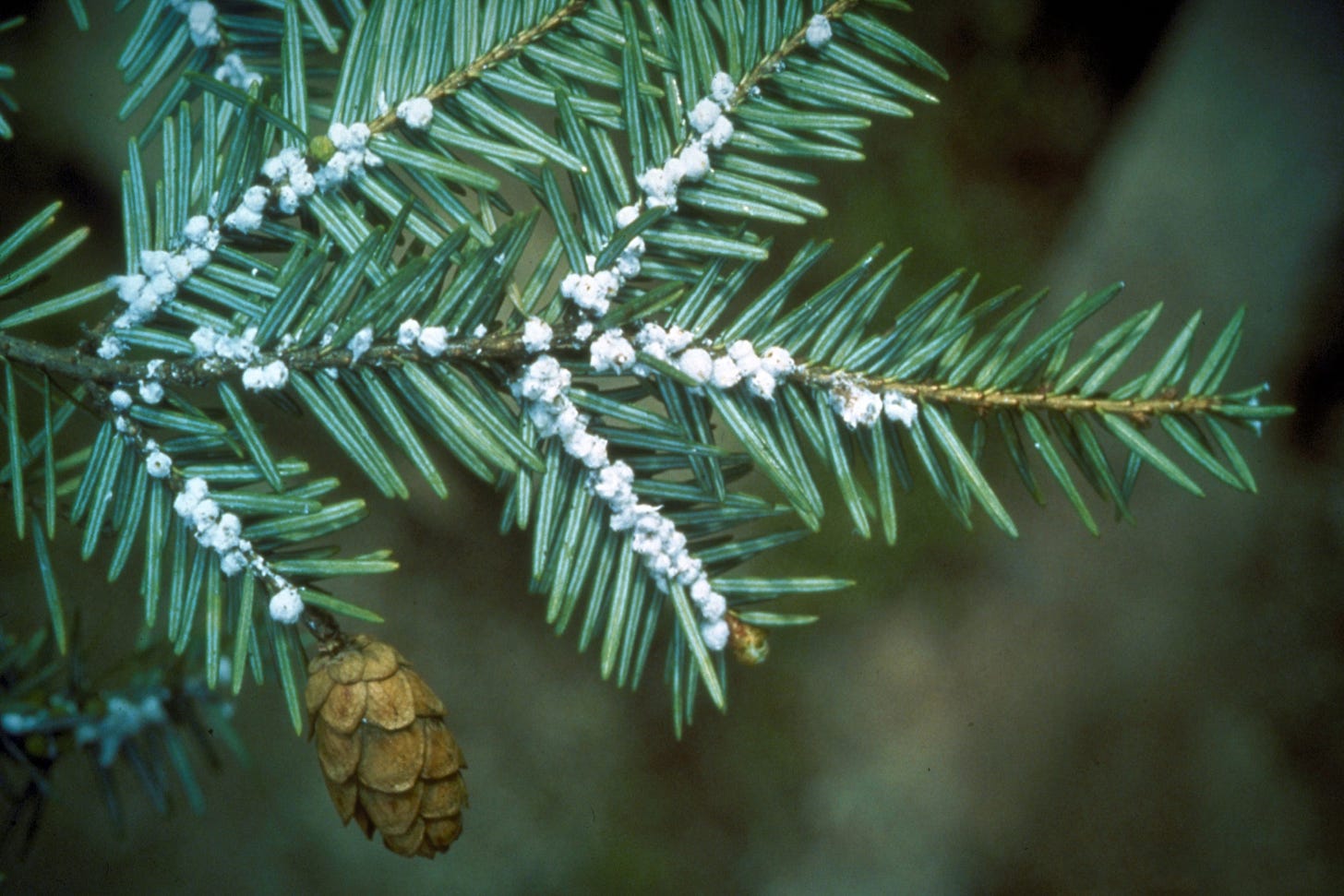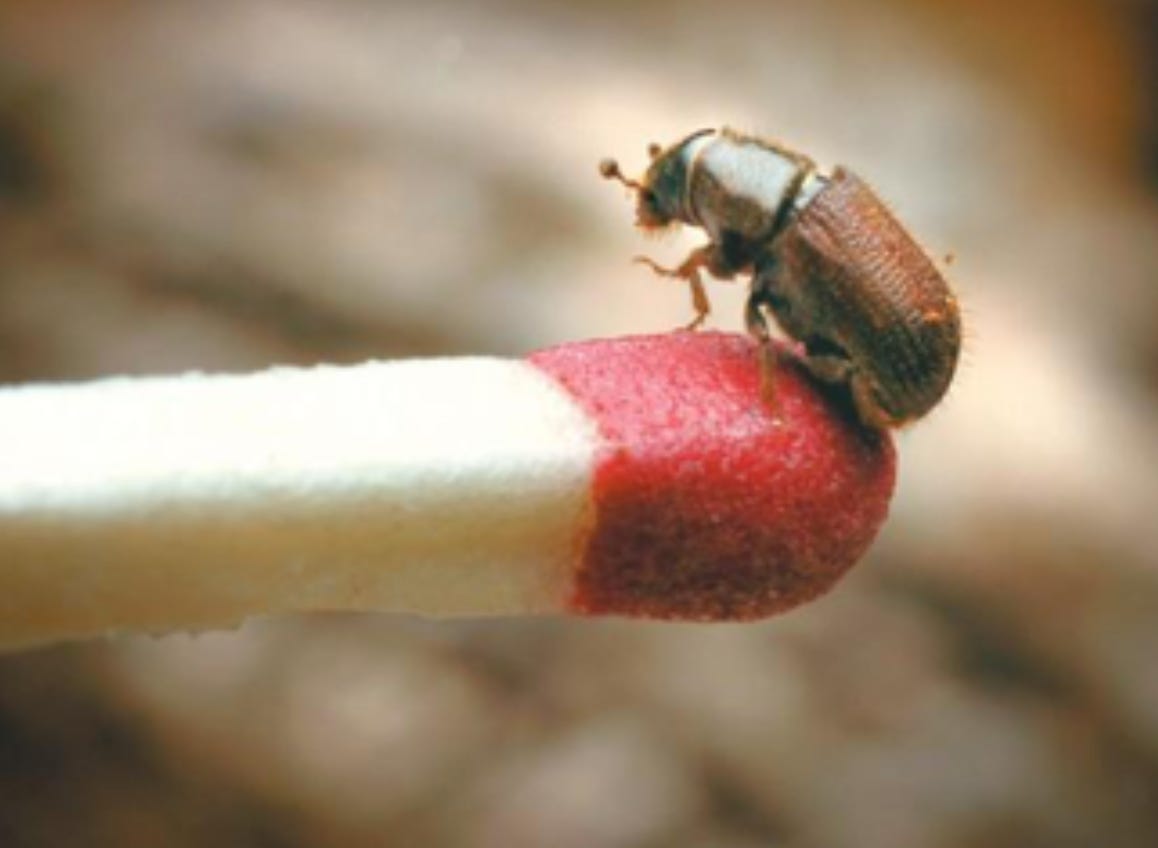ISSUE #17: A Post About Bugs Found in Live Christmas Trees but It’s a Holiday Gift Guide
All I want for Christmas is one million baby mantises.
Earlier this week, a TikTok about giving your Christmas tree a bath went viral on various forms of social media for the usual reasons: someone was doing something a little bit strange in public, and we all had to say something about it. We watched as two crumbs of dust sailed down this woman’s tub drain and engaged in discourse about online performative hygiene trends. (Bugs clean themselves constantly, but I’ll save that for a future post.) The tree in the video is artificial and likely spent the past 11 months in storage, so it makes a little bit more sense why someone would want to stuff it in the wash before putting it up (or can’t you just… vacuum it), but it did get me thinking about the annual anxiety around taking an outside thing from the outside and putting it inside.
For those households that gamely select a new live tree every year, there is always the (slim!) possibility of bringing home a few stowaways. Every holiday season brings headlines about bugs in your Christmas trees and how to get rid of them—a phenomenon most of us probably haven’t even considered unless we’ve seen it firsthand. Bugs on trees are usually hibernating or overwintering in their egg cases, and are woken up by the consistent warm temperatures inside your house, tricking them into thinking it’s spring. Without further ado, here is Bugstack’s First Annual Holiday Gift Guide of the top five bugs I hope (not) to find under my Christmas tree this year.
Adelgids
For that special someone in your life who loves a bit of festive flocking on their Christmas tree, look no further than adelgids, tiny aphid-sized insects that congregate and feed on conifers. You can find them by their fuzzy, waxy coating that appears on the surface of fir tree needles and branches like a white dusting of new fallen snow. Perfect for anyone who loves the icy, snowy look but doesn’t feel like getting out the flocking spray this year.
Aphids
Aphids are one of the most common bugs you can accidentally bring inside your home, and large, brown giant conifer aphids are often found on most fir trees. Aphids are the kind of bugs that like to hang out, grouping themselves on branches in dense packs and moving slowly from leaf to leaf, eating voraciously. They don’t live very long, but don’t worry, aphids can easily make more! Once their host tree starts drying out, they’ll start hatching winged offspring, which will then fly around your home in search of more plants to eat like flurries of fresh snowflakes. How marvelous!
Bark beetles
No one does #cozyseason right like bark beetles, tiny brown or black beetles the size of a grain of rice whose larval children enjoy boring holes into the trunk of dead and distressed trees to sleep away the winter. If the timing and temperatures are right, they might develop fast enough to emerge as adults inside your home! While they’re a pest out in the woods, they tend to be polite houseguests, avoiding burrowing into your wood furniture as it’s too dry and old to provide any nourishment.
Mites
If you catch a pop of red on your Christmas tree, it might be a colony of mites, all decked out in seasonally appropriate colors. Barely visible to the human eye, mites are found anywhere they might find food—basically anything that comes inside from indoors. The mites found on Christmas trees won’t bite or cause any damage to your home, but their eating habits do tend to cause fir needles to dry up and fall off faster, sprinkling all around and turning your living room carpet into a dense forest floor. So refreshing.
Praying mantises
A trendy addition to any holiday home, praying mantises and their reproductive habits reappear in the news every fall as some lucky homeowners find their egg cases—called ootheca—already ornamenting their Christmas tree. If you do find a mantis clutch attached to your tree in time, you can cut it off and store it in the refrigerator and put it back outside once the weather starts to warm up. If not, be prepared for hundreds of tiny baby mantises hungrily roaming all over your house thinking spring is already here. A Christmas miracle!
If you’re looking for more information regarding any of these insects, please refer to this seasonally appropriate and very useful guide from Penn State Extension.







